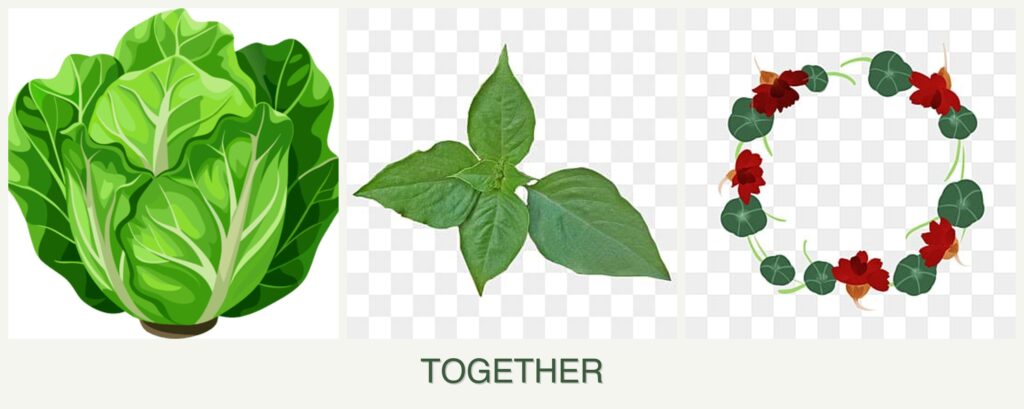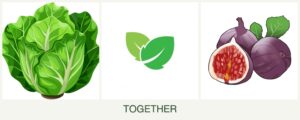
Can you plant lettuce, basil and nasturtiums together?
Can You Plant Lettuce, Basil, and Nasturtiums Together?
Companion planting is a popular gardening technique that involves growing different plants together to enhance growth, deter pests, and make the most of garden space. In this article, we’ll explore whether lettuce, basil, and nasturtiums can be successfully planted together, providing a comprehensive guide to their compatibility and growing requirements. You’ll learn how these plants can benefit each other and discover tips for optimizing your garden.
Compatibility Analysis
Yes, you can plant lettuce, basil, and nasturtiums together. These plants complement each other well in a garden setting, thanks to their compatible growth requirements and beneficial interactions.
- Growth Requirements: Lettuce, basil, and nasturtiums all thrive in similar conditions, preferring well-drained soil and moderate watering. They can coexist without competing excessively for resources.
- Pest Control: Nasturtiums are known for their ability to repel certain pests, such as aphids, which can benefit both lettuce and basil.
- Nutrient Needs: These plants have relatively low nutrient demands, making them suitable companions.
- Spacing: Proper spacing helps prevent competition and ensures each plant receives adequate sunlight and air circulation.
Growing Requirements Comparison Table
| Plant | Sunlight Needs | Water Requirements | Soil pH | Soil Type | Hardiness Zones | Spacing | Growth Habit |
|---|---|---|---|---|---|---|---|
| Lettuce | Partial shade | Moderate | 6.0-7.0 | Loamy, sandy | 4-9 | 6-12 inches | Low, rosette |
| Basil | Full sun | Moderate | 6.0-7.5 | Well-drained | 10-11 | 12-18 inches | Upright, bushy |
| Nasturtiums | Full sun | Low to moderate | 6.1-7.8 | Well-drained | 9-11 | 12 inches | Trailing or bushy |
Benefits of Planting Together
- Pest Repellent Properties: Nasturtiums can deter pests, protecting lettuce and basil.
- Improved Flavor and Growth: Basil is believed to enhance the flavor of nearby plants, including lettuce.
- Space Efficiency: Their varying growth habits allow for efficient use of garden space.
- Soil Health: These plants can help maintain soil health by providing ground cover and reducing erosion.
- Pollinator Attraction: Nasturtiums attract pollinators, which can benefit basil by improving seed production.
Potential Challenges
- Competition for Resources: Ensure adequate spacing to prevent overcrowding.
- Watering Needs: While similar, basil and lettuce may require more consistent moisture than nasturtiums.
- Disease Susceptibility: Monitor for common diseases like downy mildew, especially in humid conditions.
- Harvesting Considerations: Be mindful of the different harvesting times and methods for each plant.
Practical Solutions
- Use a drip irrigation system to manage varying water needs.
- Rotate crops annually to prevent disease buildup.
- Harvest regularly to maintain plant health and encourage continued growth.
Planting Tips & Best Practices
- Optimal Spacing: Allow for at least 12 inches between nasturtiums and other plants to accommodate their spread.
- Timing: Plant lettuce and basil in spring, and nasturtiums after the last frost.
- Container vs. Garden Bed: Use containers for basil and nasturtiums if space is limited.
- Soil Preparation: Enrich soil with compost to improve fertility and drainage.
- Companion Plants: Consider adding marigolds or chives, which also pair well with these plants.
FAQ Section
-
Can you plant lettuce and basil in the same pot?
- Yes, provided the pot is large enough to accommodate their growth and spacing needs.
-
How far apart should lettuce, basil, and nasturtiums be planted?
- Lettuce should be spaced 6-12 inches apart, basil 12-18 inches, and nasturtiums 12 inches.
-
Do lettuce and basil need the same amount of water?
- Both require moderate watering, but basil may need more consistent moisture.
-
What should not be planted with lettuce, basil, and nasturtiums?
- Avoid planting with plants that have vastly different water or sunlight needs.
-
Will basil affect the taste of lettuce?
- Basil can enhance the flavor of lettuce when grown nearby.
-
When is the best time to plant lettuce, basil, and nasturtiums together?
- Plant lettuce and basil in early spring, and add nasturtiums after the danger of frost has passed.
By following these guidelines, you can create a thriving garden with lettuce, basil, and nasturtiums, enjoying the benefits of companion planting while minimizing potential challenges.



Leave a Reply